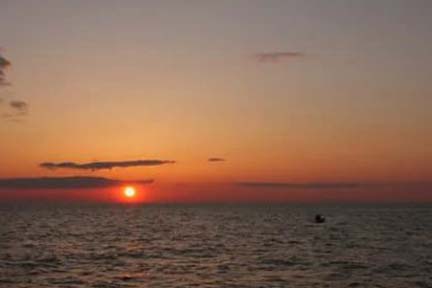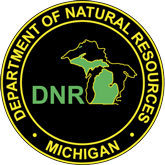| The following news release was issued earlier today by the Michigan Executive Offic of the Governor.
FOR IMMEDIATE RELEASE
July 01, 2024
Contact: [email protected]
LANSING, Mich.—Today, Governor Gretchen Whitmer announced that Michigan signed an agreement with the U.S. Army Corps of Engineers and Illinois to cosponsor the construction of the Brandon Road Interbasin Project. This milestone agreement with the Biden Administration unlocks $274 million in federal and $114 million in state funding for the first of three phases of the $1.15 billion project that will prevent invasive carp and aquatic nuisance species from entering the Great Lakes.
“Today’s agreement will help us get shovels in the ground as soon as possible on the critical Brandon Road project,” said Governor Gretchen Whitmer. “The Great Lakes are the beating heart of Michigan’s economy, and Brandon Road will help us protect local communities and key industries, including fishing and boating, that support tens of thousands of good-paying jobs. I am grateful to Governor Pritzker in Illinois, the Army Corps of Engineers, and our champions in Congress for their long-term partnership on this monumental task. Together, we will get the job done so we can protect our lakes and power economic growth for generations to come.”
Brandon Road Lock and Dam near Joliet, Illinois, is a critical pinch point to stop invasive carp from moving into the Great Lakes. The Brandon Road Interbasin Project will implement a complex series of invasive carp and aquatic nuisance species deterrents.
“The USACE Rock Island District has been working diligently with our partners in the states of Illinois and Michigan to move this critical project forward,” said Rock Island District Commander, Col. Aaron Williams. “We are excited to be entering this next phase of the project and are committed to preventing the upstream movement of invasive carp and other aquatic nuisance species into the Great Lakes.”
“Our multi-agency team of scientists and engineers has worked tirelessly over the last three years in combination with external stakeholders to design what we believe is an effective solution for protecting the Great Lakes watershed,” said Scott Whitney, BRIP Project Manager at the USACE Rock Island District.
“The Brandon Road Interbasin Project is essential to stopping invasive carp from wreaking havoc on our Great Lakes, and today we are hitting a major milestone – the start of the construction phase. I’ve worked tirelessly over the years to get this critical project to this point, alongside my partners in the U.S. Senate, Michigan, Illinois, and the Army Corps of Engineers. This is a big win that will protect our Great Lakes for generations to come,” said U.S. Senator Debbie Stabenow.
“This agreement is a pivotal step forward in preventing the spread of harmful, invasive carp throughout our Great Lakes,” said U.S. Senator Gary Peters. “For years, invasive carp have threatened our environment, as well as key industries that rely on healthy Great Lakes to help power our state’s economy. I’ve repeatedly advocated and worked to secure resources for this vital infrastructure project, and I’m thrilled that it will soon be underway.”
“This agreement, which has been a long time coming and the result of close partnership between many stakeholders, especially Governor Whitmer and my colleagues in Congress, will be pivotal in protecting our Great Lakes from harmful and destabilizing invasive species that threaten the environment, economy, and our way of life,” said U.S. Congresswoman Debbie Dingell. “I’m proud to have helped secure resources for this project and will continue to work every day to protect our most critical natural resources.”
“The Great Lakes hold countless memories for many of us, from catching our first fish to watching loved ones play on their shores,” said Michigan Attorney General Dana Nessel. “They are central to our Pure Michigan identity. This landmark agreement marks a significant victory in protecting these lakes from invasive, dangerous carp, ensuring the joy and beauty of these waters remain for all to enjoy.”
“Today’s announcement represents a major milestone in the protection of Michigan’s natural resources, in this case one of our most prized natural resources, the Great Lakes,” said Scott Bowen, director of the Michigan Department of Natural Resources. “I want to thank and congratulate everyone involved in this effort, at the state and national level, for the years of effort that went into making this day a reality. Our children and grandchildren will thank them, too.”
Invasive carp, notably bighead, silver, and black carp, have the potential to outcompete other Great Lakes fish species, resulting in fewer fish like lake whitefish, perch, and walleye. If invasive carp were to enter and colonize in the Great Lakes basin, inland rivers and lakes would also be vulnerable.
Silver carp are known to leap through the air and have caused injury to boaters in the Illinois River and other locations where they are present. In many cases, boaters cease to enjoy waters that are infested with silver carp, and fishing opportunities are greatly reduced.
Brandon Road Interbasin Lock and Dam Project
Michigan has been working with the U.S. Army Corps of Engineers and other Great Lakes states since 2011. These efforts have resulted in the following milestones:
- 2014: the Great Lakes Mississippi River Interbasin Separation Study identified several options for separating the two basins. Subsequently, the Brandon Road lock and Dam site in Joliet, Illinois, was identified as the best location to prevent invasive species from entering the Great Lakes.
- 2018: the Brandon Road Feasibility Study was finalized, and Michigan committed $8 million to the project.
- 2020: a Planning, Engineering, and Design agreement was signed between Illinois and the U.S. Army Corps of Engineers. Michigan supported Illinois as a nonfederal sponsor and contributed $8 million of the $10.1 million nonfederal funds required.
- 2022: a new cost for the Brandon Road Interbasin Project was estimated at $1.14 billion, requiring a 10% nonfederal cost share.
- 2023: appropriations in Michigan ($64 million) and Illinois ($50 million) meet the nonfederal requirement to begin construction of the project.
Protecting the Great Lakes
Michigan is home to 21% of the world’s fresh water—the world’s largest surface system of fresh water. Since taking office, Governor Whitmer has taken historic action to protect the Great Lakes as a central part of Michigan’s tourism industry, economy, history, and way of life.
The governor signed game-changing clean energy legislation to enact a 100% clean energy standard by 2040 and protect Michigan’s natural resources. Her MI Clean Water plan made historic investments to protect the Great Lakes from pollution and help communities across the state make much-needed repairs to their water infrastructure systems. Under her leadership, Michigan enforced the strongest Lead and Copper Rule for drinking water in the country and established health-based standards for PFAS in drinking water supplies.
Governor Whitmer was also appointed as the next Chair of the Great Lakes St. Lawrence Governors and Premiers. |





 A familiar face in fire prevention will soar above the National Cherry Festival in Traverse City this week as the Michigan Department of Natural Resources hosts the Smokey Bear hot air balloon.
A familiar face in fire prevention will soar above the National Cherry Festival in Traverse City this week as the Michigan Department of Natural Resources hosts the Smokey Bear hot air balloon.





 The boat landing events are part of the 11th Annual AIS Landing Blitz in which local partners such as lake associations and cooperative invasive species management areas (CISMA) give boaters tips to prevent the spread of AIS and comply with laws for recreational boating. The regional
The boat landing events are part of the 11th Annual AIS Landing Blitz in which local partners such as lake associations and cooperative invasive species management areas (CISMA) give boaters tips to prevent the spread of AIS and comply with laws for recreational boating. The regional  An EGLE
An EGLE 

